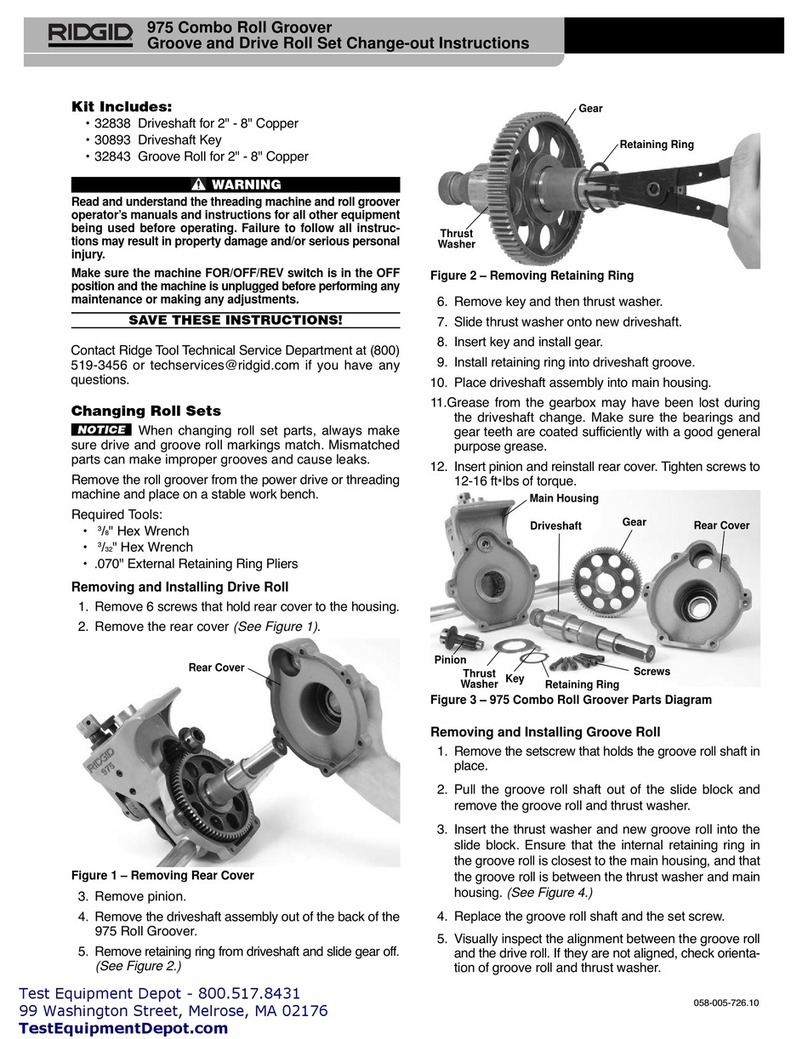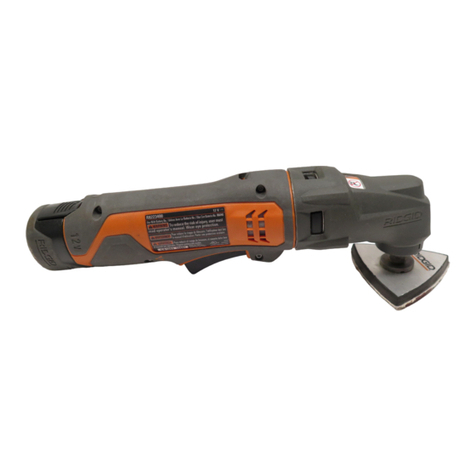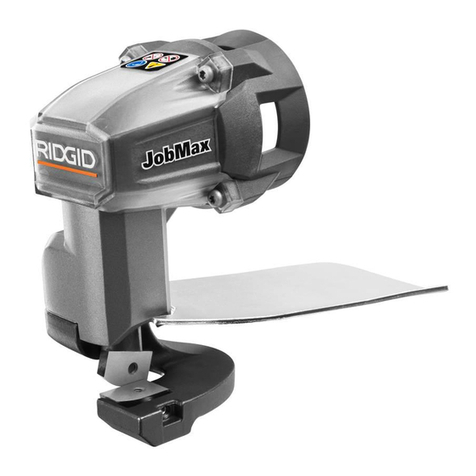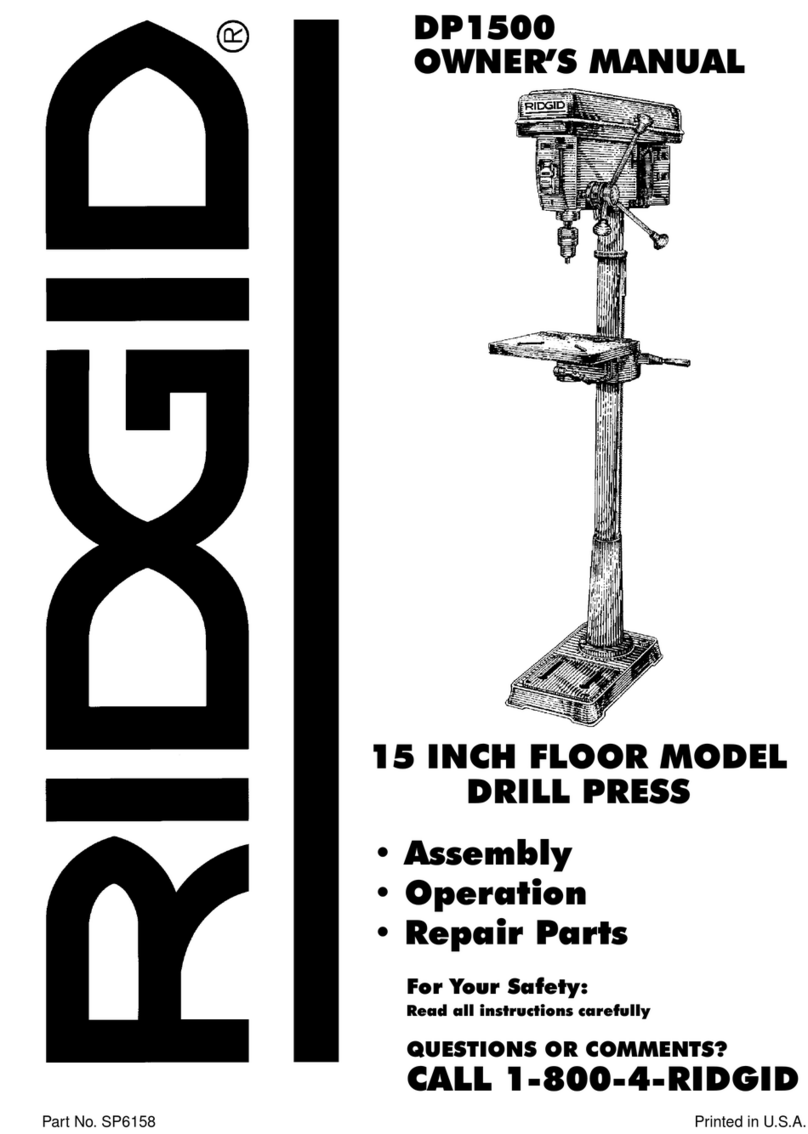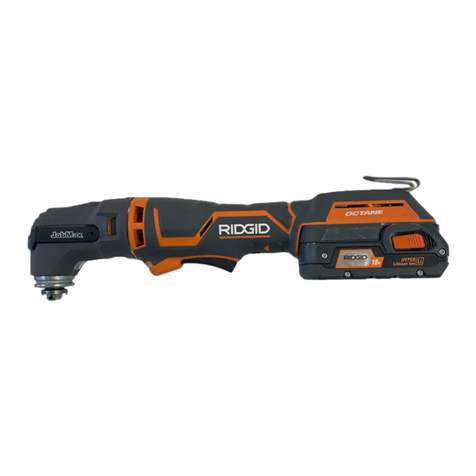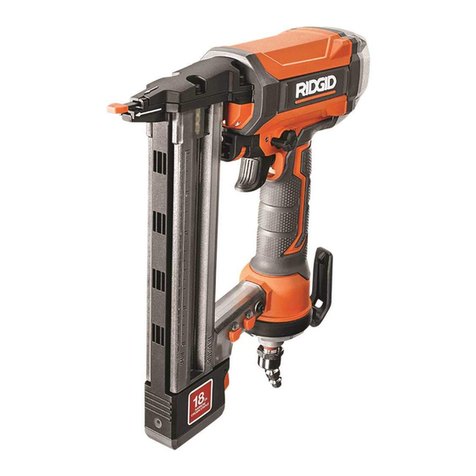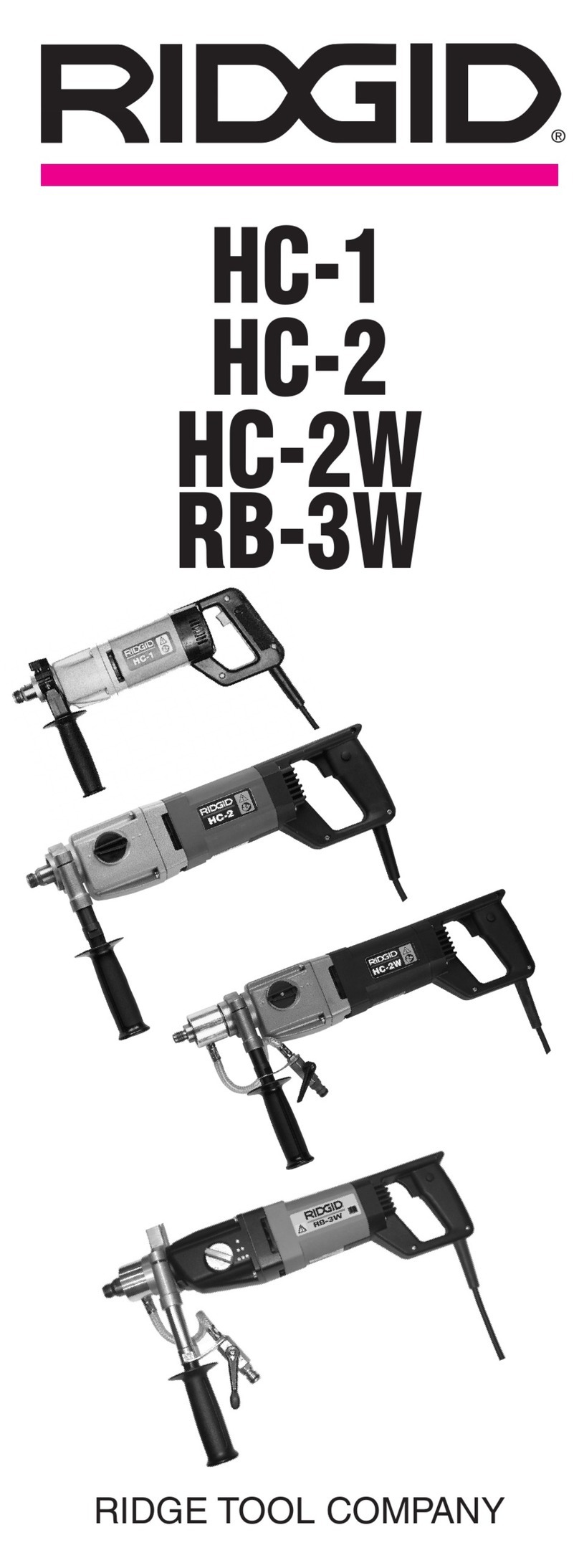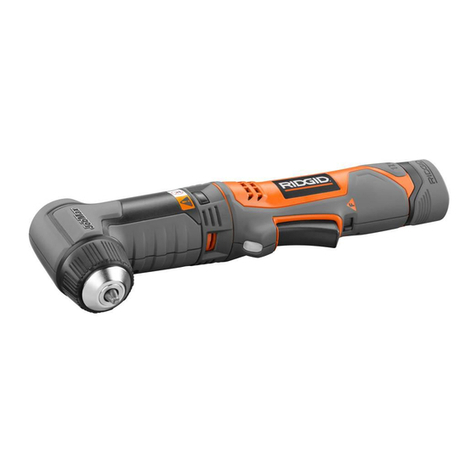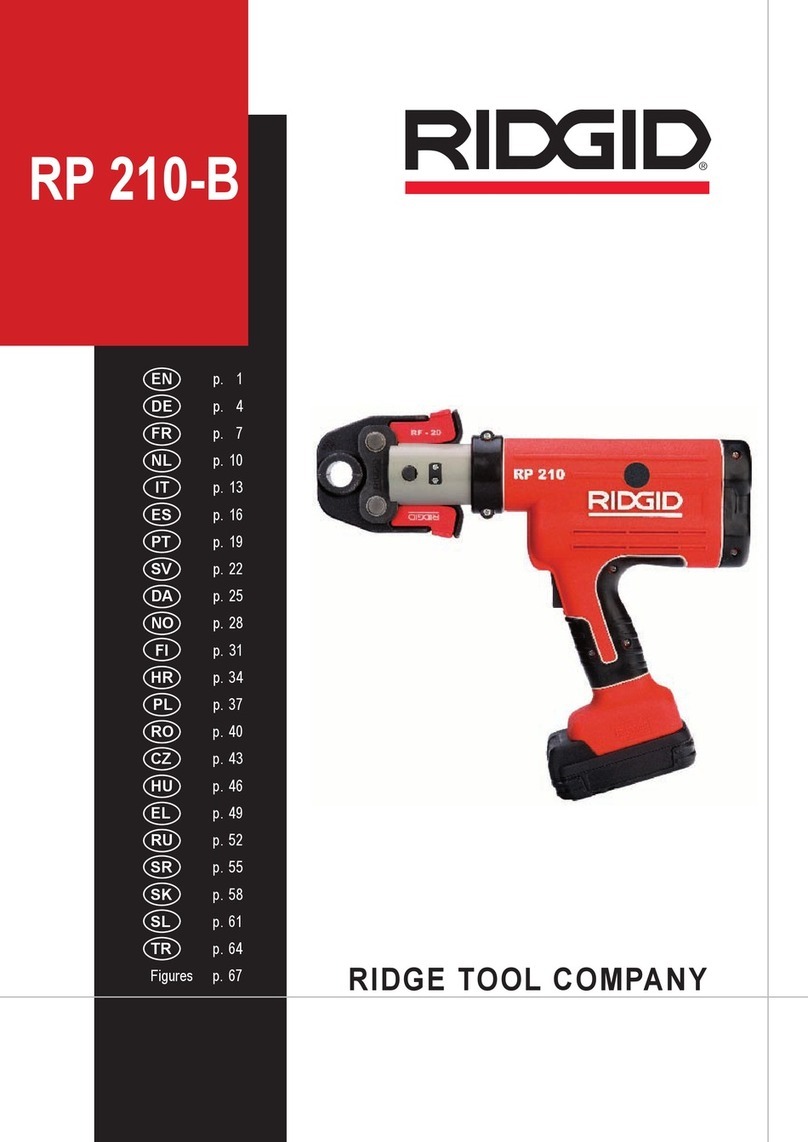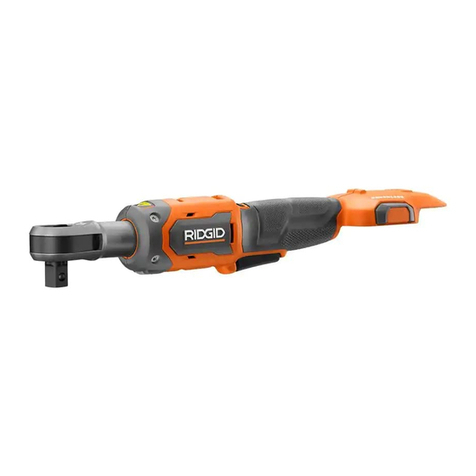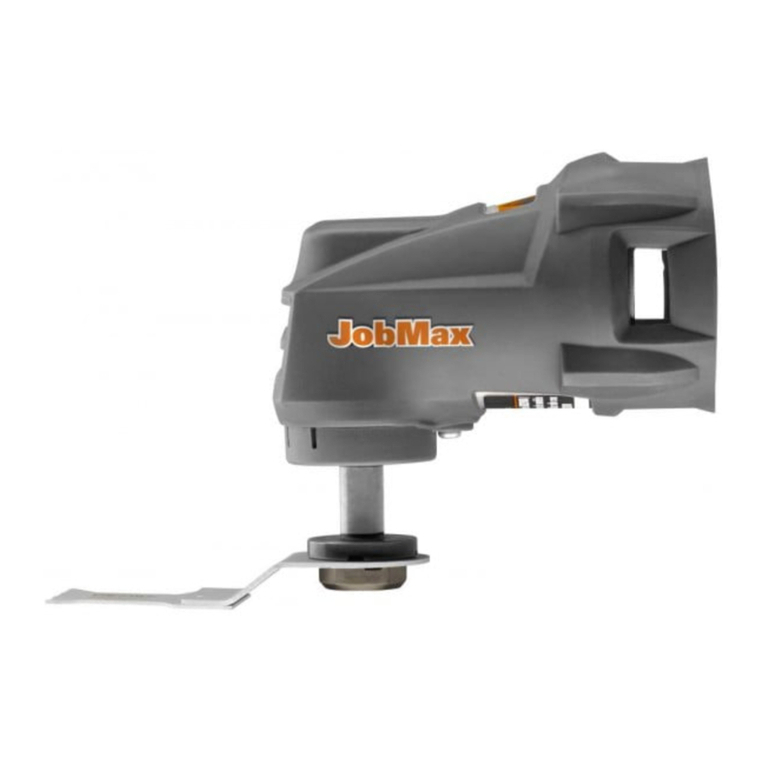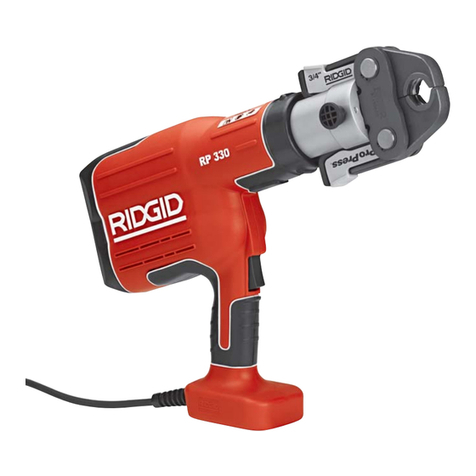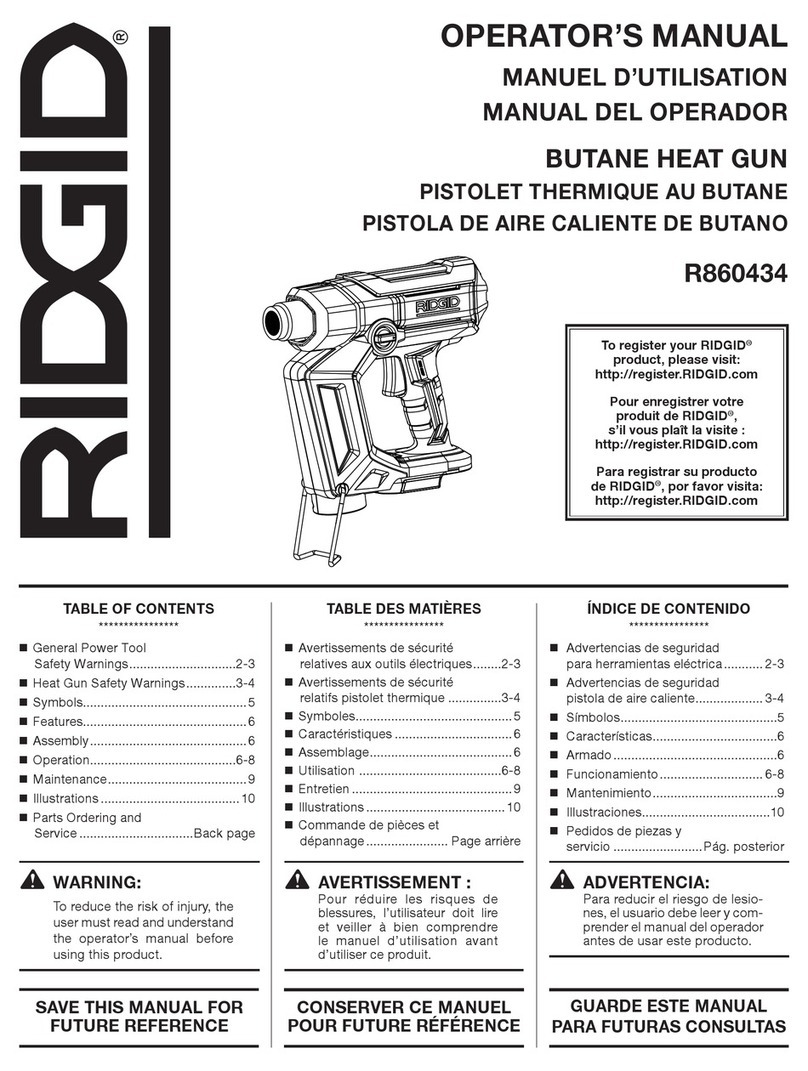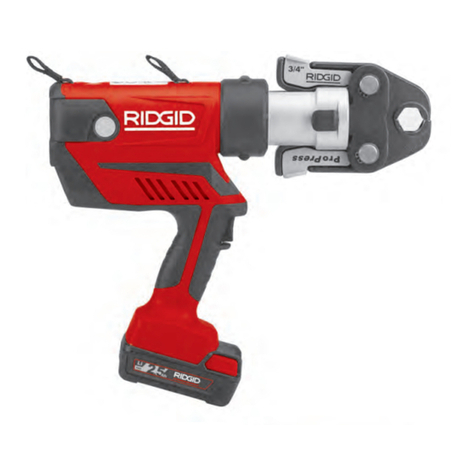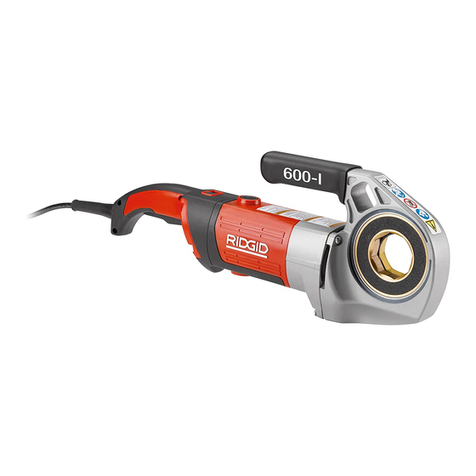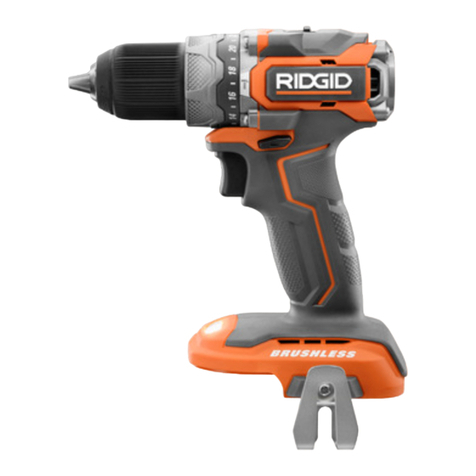
7
1. Check work area for:
• Adequate lighting.
• Flammable liquids, vapors or dust that may ignite. If
present, do not work in area until sources have
been identified and corrected. The machine is not
explosion proof and can cause sparks.
• Clear, level, stable and dry place for all equipment
and operator.
• Properly grounded electrical outlet of the correct volt-
age. A three-prong or GFCI outlet may not be prop-
erly grounded. If in doubt, have outlet inspected
by a licensed electrician.
• Clear path to electrical outlet that does not contain
any potential sources of damage for the power cord.
2. When using the beveller, you will generally need to use
extension cords. Choose an extension cord that:
• Is in good condition.
• as a grounded (earthed) plug like on the bev-
eller.
• Is rated for outdoor use.
• as sufficient wire size. For extension cords up to 50'
(15.2 m) long use 14 AWG (1.5 mm2) or heavier. For
extension cords 50'-100' (15.2 m - 30.5 m) long
use 12 AWG (2.5 mm2) or heavier.
With dry hands, plug the extension cord into the outlet.
Run the extension cord along a clear path to the bev-
eller. Keep all connections dry and off the ground.
Leave excess cord at the base of the machine to allow
for machine movement in the Fixed orkpiece/ Moving
Beveller configuration (see Figure 20A & B). Do not
plug the beveller in at this time.
3. Make sure all equipment has been properly inspect-
ed.
4. Keep bystanders clear of work area, set up guards or
barricades to create a minimum of 6 feet (2 m) of
clearance around the workpiece and beveller. This
helps to prevent bystanders from being struck by
chips during use.
Workpiece Preparation
Inspect the work piece to be bevelled and confirm that the
Model B-500 Beveller is a correct tool for the job. See
Specifications.
For pipe, the pipe end must be square within 0.062" (1.6
mm), see Figure 5. The beveller follows the cut on the end
of the pipe and does not square the end of the pipe. For
plate, the edge to be bevelled must be straight, without
curves. The bevelled edge will be no straighter than the ini-
tial cut. Bevelling non-square edges could cause tracking
issues and can affect the bevel quality.
4. Inspect and maintain any other equipment being used
per its instructions to make sure it is functioning prop-
erly.
Set- p And Operating
Instructions
WARNING
Always wear appropriate eye protection and hearing
protection. Cutting tools can break or shatter. Cut -
ting produces chips that can be thrown or fall into
eyes. Cutting produces high noise levels that over
time can damage your hearing.
Do not wear loose clothing when operating machine.
Keep sleeves and jackets buttoned. Do not reach
across machine. Clothing can be caught by the ma -
chine resulting in entanglement.
Keep bystanders clear of work area. Guard or bar-
ricade minimum of 6 feet (2 meter) around the work-
ing area. Chips or broken cutting tools can be thrown
and cause injury beyond immediate area of opera-
tion. A guard or barricade that provides a clear-
ance around the work piece will reduce the risk of
injury.
One person must control the work process and the
Beveller ON/OFF switch. Only the operator should be
in the work area when the machine is running. This
helps reduce the risk of injury.
Properly support work piece and beveller. Make
sure the beveller is secure to the work piece. This
will reduce the risk of striking and crushing injuries
from tipping and falling pipe and equipment.
Do not start the Beveller with the cutter inserts
touching the work piece. Let the cutter head reach
full speed before carefully feeding it into the work
piece. The cutter head may bind, walk or kickback
if the tool is started while in contact with the work
piece.
Keep hands away from rotating cutter head. Allow
parts to come to a complete stop before handling the
tool or pipe. This practice will reduce the chance of
entanglement in rotating parts.
Do not use power tools such as a drill or impact to
drive the beveller. Only drive beveller by hand. se of
power to drive the beveller can increase the risk of
injury.
Set-up and operate the beveller according to these
procedures to reduce the risk of injury from electric
shock, entanglement, striking, crushing and other
causes, and to help prevent machine damage.
Model B-500 Tra sportable Pipe Beveller
